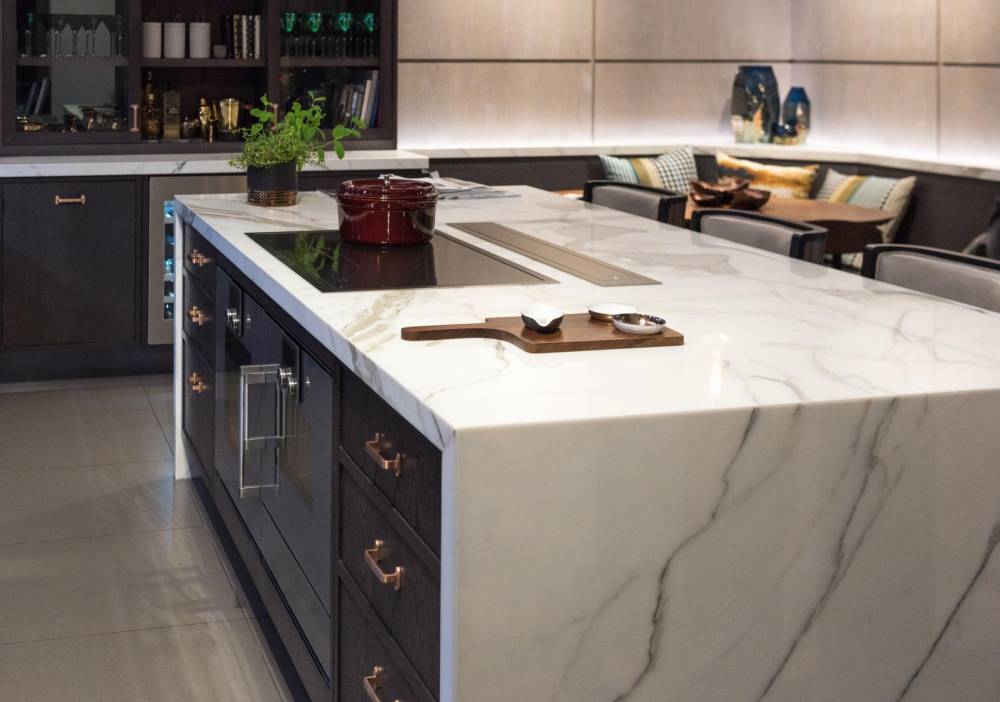What is Marble and How is it Formed?
Marble is one of the most beautiful materials on earth. The word "marble" is derived from the Greek word marmaros, meaning "shining stone.” No wonder it was a favorite of early artists (130 - 100 BCE) in Mesopotamia like Alexandros and Michelangelo. You can see their work displayed in the Acropolis Museum, Athens and the Louvre, Paris. It is also a favorite material of builders for its beauty and strength. Marble is used in making columns, pillars, statues, paving stones, and many other features that adorn our modern homes. Read on for more marble information such as how it is formed and the kinds of marble used today.
What is Marble?
The beautiful smooth, white etched material that we call marble is made from a process (metamorphosis) that involves heat and pressure from inside the earth. Marble is created from limestone or dolostone and calcite that has been subjected to extremely high temperatures and tons of pressure from being underground. It is mined and extracted during excavations and other projects. In its natural form, it looks nothing like the beautiful countertops and flooring tiles you see in many modern homes. To achieve this state, it has to be processed several more times and cut. Modern uses for marble include building materials, sculpting, paving stones and monuments.
How Is Marble Formed?
Marble formation takes place over thousands of years by heat from the magma in the earth’s crust. It is created when limestone or dolostone comes in contact with the magma and becomes superheated to extreme temperatures. The calcite in the limestone crystallizes and that is why you see shiny specks and layers within the rock. What gives marble its unique appearance are the “veins” (mineral deposits in the limestone) running through the rock itself revealing the layers of sediment that was calcified during the exposure to heat.
The calcite particles in the limestone are often fossil material and debris. During the metamorphosis, it recrystallizes changing the texture of the rock. In the beginning, the calcite crystals are very tiny resembling grains of sugar. The crystals grow larger under the heating process as the original fossils and sediments are crystallized and fused into the rock. The recrystallization is what separates the limestone and marble. The more heat it undergoes, the larger the crystals will be.
Most often, the marble you see is white but due to the color of the limestone itself, it may take on a yellow, green, or pinkish cast. Minerals in the rock surrounding the limestone during recrystallization are responsible for the range of colors in the resulting marble. Clay, mica, quartz, and iron oxides are what gives the red, pink, and brown hues, while serpentine lends a green hue to others.
Where Does it Come From?
Since marble is made from limestone and is found deep in the earth, it must be mined in quarries and then transported all over the world for processing and to be made into building materials. Once it arrives at the factories, it is classified by color and types and sent to be cut. The cutting is done with a block cutter (diamond saw blade) or multi-wire cutter depending on the size and thickness of each piece. Each slab is then sanded and polished. This is the process for commercial - grade marble. Marble used for sculpting may be left in blocks. Marble is mined mostly in the following countries: These 4 have the largest sources of marble and the most quarries.
- Europe
- North America
- Asia
- Africa
Kinds of Marble and Their Uses
A few different kinds of marble named for the location they were discovered or mined.
Sculpting: White Marble
Carrara (Italy)Pentelicus (Greece)
Proconnesus (Turkey) p;
Leave a Reply
Brands we work with

Contact Us
Call or Message us for a quote


(0) Comments